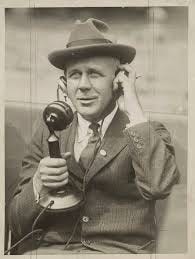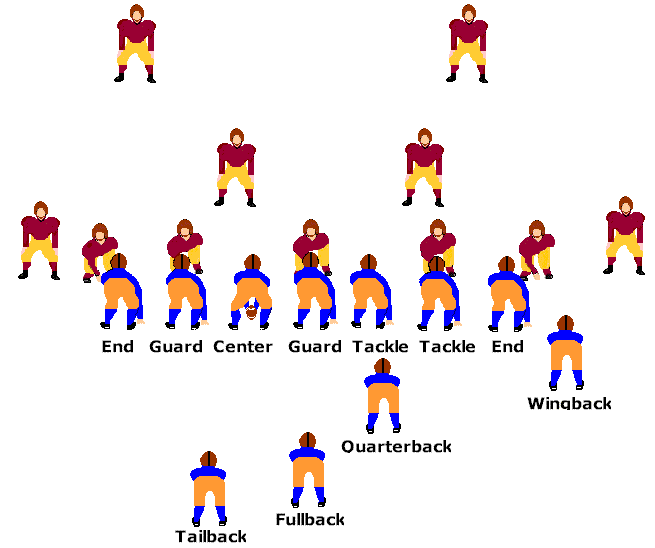Four Horsemen - Revisted
Showing some appreciation for real Americana and some high quality prose.
In 1924, the Fighting Irish of Notre Dame took on the Black Knights of the Hudson from West Point in a contest held before 50,000 spectators in the stands of the Polo Grounds. It was the golden age of college football, now well past its infancy and, with the help of Walter Camp, John Heisman (a Clemson man, etc.) and some guy named Teddy, the sport would survive its adolescence.
In this era, there were no scholarships or recruiting. Just “our boys against yours”. The way it should be.
The Irish were led by Knute Rockne, who was not yet the legend he would soon become. However, Rockne had already made his mark on the Notre Dame-West Point rivalry, as a member of the Irish team in 1913 that unveiled a new commitment to the recently legalized forward pass, decimating the black knights 35-13. Rockne would become the head coach of the Irish just 5 years later (although he coached a few of the intramural teams in South Bend during his time as a student, with a record of 2-5-4).
It was in 1924 that Rockne’s true legend began. His Irish team featured a backfield of 4 superb athletes that were able to run into any of the gaps the line could create, inside, outside, and around end. Despite the success of Rockne’s early career, it was the 1924 matchup against West Point that would cement his legacy, and would enter into the American sports lexicon a new title - The Four Horsemen.
The Four Horsemen were a creation of Grantland Rice, a Tennessean inspired to join the pioneering ranks of sports media by a 1907 Vanderbilt-Sewanee football tilt, part of a longstanding local rivalry that inspired part of a cheer, of which now only the last line is commonly heard. (Down with the heathens, up with the church! Yea, Sewanee’s Right!)
Rice would enter the writing world, in large part thanks to one of his old Sewanee rivals, and would eventually land a gig at the New York Herald, where he made his mark in October of 1924.
“Outlined against a blue-gray October sky the Four Horsemen rode again. In dramatic lore they are known as famine, pestilence, destruction and death. These are only aliases. Their real names are: Stuhldreher, Miller, Crowley and Layden. They formed the crest of the South Bend cyclone before which another fighting Army team was swept over the precipice at the Polo Grounds this afternoon as 55,000 spectators peered down upon the bewildering panorama spread out upon the green plain below.”
The rest was history and Notre Dame football would never look back.
For those wondering why this was a 4-man backfield, a bit of a lesson;
In 1907, a man named Pop Warner began coaching football at the Carlisle Indian school in Pennsylvania. There, designing an offense around a do-it-all athlete named Jim Thorpe, Warner devised a scheme that highlighted his star’s ability to run, pass, and punt with skill. In this scheme, Thorpe would get the ball to start every play and the defense could not know if the offense would plunge into the line, throw over the top, run around end, or punt them back into their own territory. Warner gave us the single wing.
From this original “unbalanced line” (more players to the strong side than to the weak) single wing, many derivations were made, including one by Notre Dame; the Notre Dame box.
This formation was used extensively by the Irish teams of the 1910s and 1920s, and into the 1930s. It was also featured by the Green Bay Packers in the 1920s and 1930s, under the supervision of Notre Dame graduate Curly Lambeau (yes that Lambeau).
The Notre Dame variant, which featured a balanced line, allowed more running to the weak side and the positioning of the wingback being shifted to a halfback allowed more immediate ball carrying threats to the weak side as well. You’ll notice the quarterback, aligned offset from center in both the traditional single wing and the box. This player primarily blocked, but was still named the quarterback because of his alignment a quarter of the way into the backfield. In this box, the quarterback could more easily jump under center, take the snap, and throw a pass.
Here are some highlights of single wing play from a bygone era.
It was this backfield alignment which propelled the Four Horsemen to stardom, and Grantland Rice along with them. Notre Dame was never the same.
The Irish won that 1924 game and the rivalry continued with regular occurrence leading up to the 1946 “game of the century” between two top-ranked teams in Yankee Stadium that ended in a 0-0 tie and featured 4 Heisman trophy winners. Afterwards, due to the increased presence of gambling and ticket counterfeiting, the two schools agreed to postpone the rivalry temporarily.
They have met 18 times since, with West Point winning just once in 1958. In today’s world, there is little hope for an Army or Navy victory over the Irish. Due to constraints on player size and a bevvy of off-field obligations, the service academies neither can nor want to invest too heavily into on-field success. In many ways, collegiate athletics in West Point and Annapolis are still viewed as extracurricular, character-development activities. The way it should be.
That said, West Point does run something single wing adjacent in their multiple-ball-carrier, option attack. Who knows, maybe a new four horsemen will emerge under the lights in the new Yankee Stadium. It is expected to be in the 40s with cloud cover and maybe some rain. The kind of weather that suggests, if you listen closely, you might hear the echoes of yesteryear and feel the rush of a time long gone.






